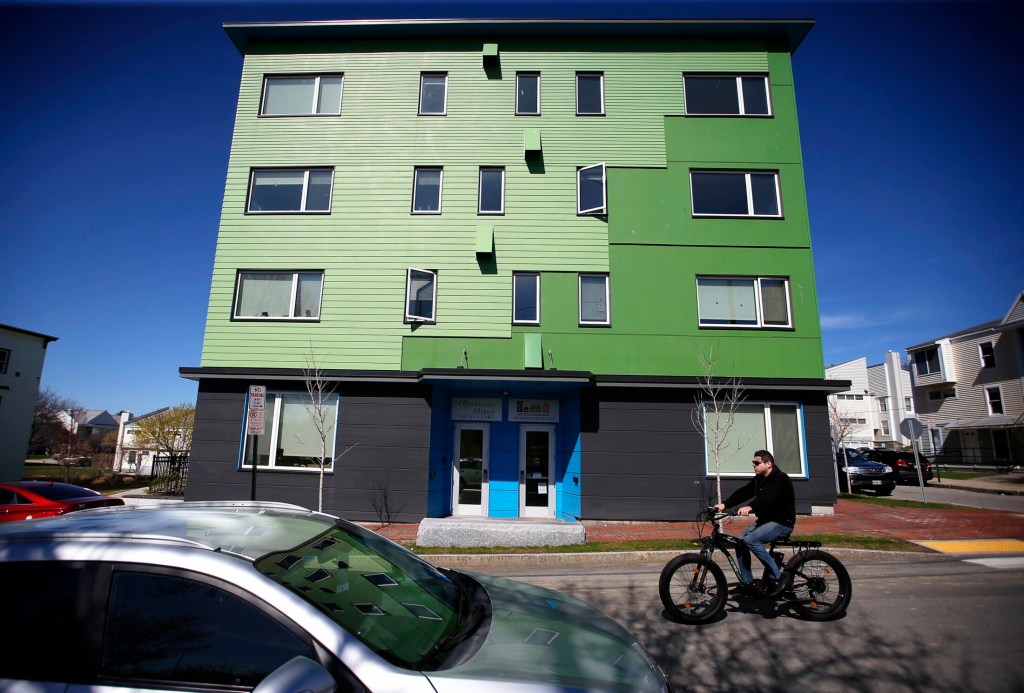Housing and transportation. Transportation and housing.
We tend to think of them as two different issues, but ongoing research by the Greater Portland Council of Governments makes a strong case that it’s a mistake to look at one without the other.
The Transit Tomorrow survey is gathering data about not only how people use buses, trains and ferries but also the kind of land use policies that make them easier to use. It’s a way of looking at development that’s long overdue.
“We have the potential to become a transit-rich region with bus, train and ferry service delivering the convenience and reliability of a car,” said Kristina Egan, the council’s executive director. “But to make it cost-effective, more people need to live within walking distance of stations and stops. Maine has a tradition of vibrant neighborhoods and villages, and these can serve as transit hubs.”
Everybody knows that housing is getting more expensive, especially in and around cities like Portland, where longtime residents are competing for apartments with young newcomers who want an urban lifestyle as well as downsizing elders who are leaving the suburbs. It’s kind of like the back-to-the-land movement, only in reverse.
The tight housing market is rippling through the surrounding towns. According to GPCOG’s analysis, a family making the median income (just under $60,000 in today’s money) could afford to live in virtually any Cumberland County town as recently as 2000. Today they have to go farther west as Portland, South Portland, Gorham and Pownal are becoming financially out of reach.
The data show that it’s not just housing demand that’s growing. Increasingly, the metro areas are also where the jobs are, which means workers who don’t make enough to buy into the hottest real estate markets have to drive longer distances to get to work.
Every family has to decide on its own where they live and how far they drive for work, but collectively their choices are remaking the state.
Longer commutes mean more cars on the road, especially twisty rural roads that were laid out when a farmer in Buxton might take a trip into town a couple of times a year.
That means more traffic, more crashes, more wear and tear on the roads, and more development in what people remember as quiet woods or open fields.
The cities have another set of problems, as middle-income families are forced out, leaving behind an uneasy mix of the richest and the poorest.
Businesses that would like to expand can’t because of a shortage of workers, and it’s hard to recruit people from away to fill those jobs if there’s no affordable housing in the places people most want to be.
That’s what you get when you think of housing and transportation as separate issues. But when you look at them as one set of interlocking challenges a whole new range of options appear. Most of all, it requires you to think regionally.
For cities, it would mean taking a much more active role in building the kind of middle-income housing that the markets won’t. Instead of requiring big employers to build parking garages for their workers (at a rate of up to $50,000 a space), they could contribute to the construction of new housing that’s close enough for employees to walk to work. That’s a way to stop the erosion of working-class and middle-income communities, and it would also do some things that are not usually on a city’s agenda, like reducing traffic and development pressure in rural areas.
For outlying towns, regional thinking could mean changing the way they regulate land use. Insisting on big lots and setbacks for new construction drives up prices and pushes development further out, straining road capacity. Towns would be better off if they could cluster new housing and businesses in historic village centers, where residents could walk safely to go to school, do errands or socialize.
Then you could connect these centers with transit lines that would take people to work without putting more cars on the road.
All this sounds easier than it actually is. Local control is encoded in the DNA of Maine towns, and we’re not set up to think as a region. But we should start.
High housing costs and longer commutes are not just lifestyle preferences for individual families.
More miles driven means more air pollution in a state with one of the highest asthma rates in the country. It also means more fatal collisions, which kill Mainers at a rate of three per week.
As a state, we have to borrow $100 million every couple of years to maintain the roads we already have, and many of them are still in lousy shape. The response to traffic and congestion can’t always be to build another lane.
It’s not just a transportation problem, it’s a housing problem, too, and you won’t solve either one without doing something about the other.
Greg Kesich is editorial page editor for the Portland Press Herald.
Send questions/comments to the editors.



Success. Please wait for the page to reload. If the page does not reload within 5 seconds, please refresh the page.
Enter your email and password to access comments.
Hi, to comment on stories you must . This profile is in addition to your subscription and website login.
Already have a commenting profile? .
Invalid username/password.
Please check your email to confirm and complete your registration.
Only subscribers are eligible to post comments. Please subscribe or login first for digital access. Here’s why.
Use the form below to reset your password. When you've submitted your account email, we will send an email with a reset code.